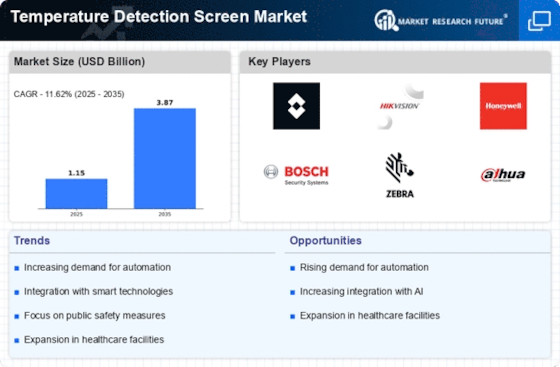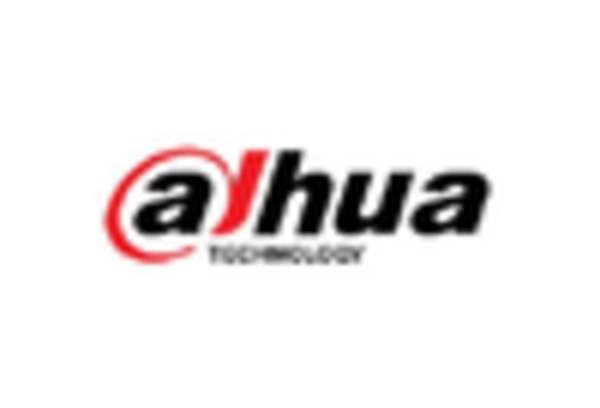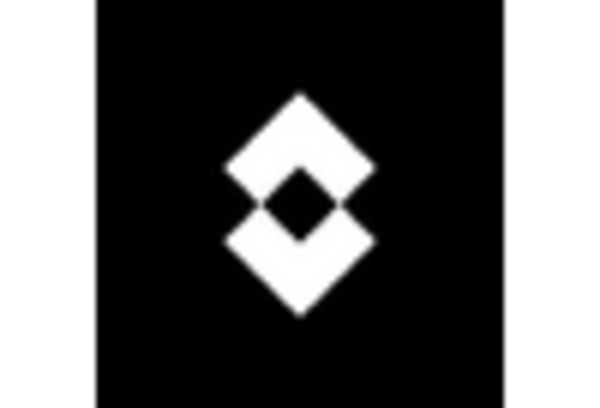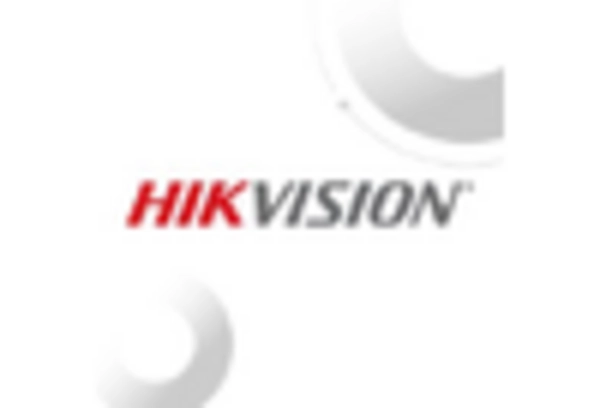Regulatory Compliance and Standards
The establishment of stringent regulatory compliance and standards is a crucial driver for the Temperature Detection Screen Market. Governments and health organizations are increasingly mandating the use of temperature screening devices in public spaces, workplaces, and transportation hubs. This regulatory landscape compels businesses to invest in reliable temperature detection solutions to meet compliance requirements. For example, recent regulations in various regions have outlined specific guidelines for temperature monitoring in public areas, thereby creating a robust demand for temperature detection screens. As a result, the Temperature Detection Screen Market is likely to experience sustained growth, with compliance-driven purchases becoming a significant portion of overall sales.
Increased Focus on Health and Safety
The heightened emphasis on health and safety protocols across various sectors appears to drive the Temperature Detection Screen Market. Organizations are increasingly adopting temperature detection solutions to ensure the well-being of employees and customers. This trend is particularly evident in sectors such as healthcare, education, and retail, where maintaining a safe environment is paramount. According to recent data, the market for temperature detection solutions is projected to grow at a compound annual growth rate of approximately 10% over the next five years. This growth is likely fueled by the ongoing need for effective health monitoring systems, which are becoming integral to operational strategies in many industries. As a result, the Temperature Detection Screen Market is witnessing a surge in demand for advanced screening technologies.
Growing Awareness of Preventive Health Measures
The growing awareness of preventive health measures among the general population is significantly influencing the Temperature Detection Screen Market. As individuals become more conscious of health risks, there is an increasing demand for proactive health monitoring solutions. This trend is particularly evident in workplaces and educational institutions, where temperature detection screens are being implemented as part of broader health initiatives. Market Research Future suggests that the demand for temperature detection solutions could rise by approximately 15% annually as organizations prioritize preventive health strategies. Consequently, the Temperature Detection Screen Market is positioned to benefit from this shift towards a more health-conscious society.
Technological Advancements in Detection Systems
Technological innovations in temperature detection systems are significantly influencing the Temperature Detection Screen Market. The integration of artificial intelligence and machine learning algorithms into these systems enhances their accuracy and efficiency. For instance, modern temperature detection screens can now provide real-time data analytics, enabling organizations to respond swiftly to potential health risks. The market is expected to see a rise in the adoption of these advanced systems, with estimates suggesting that the segment could account for over 40% of total market revenue by 2026. This shift towards more sophisticated technology not only improves the reliability of temperature screenings but also positions the Temperature Detection Screen Market as a leader in health monitoring solutions.
Rising Demand in Transportation and Travel Sectors
The transportation and travel sectors are witnessing a notable increase in the demand for temperature detection solutions, which is positively impacting the Temperature Detection Screen Market. Airports, train stations, and bus terminals are implementing temperature screening measures to ensure passenger safety. This trend is expected to continue as travel resumes and passenger volumes increase. Market analysis indicates that the transportation sector could represent a substantial share of the temperature detection market, potentially exceeding 30% by 2026. The need for efficient and effective screening solutions in these high-traffic areas underscores the importance of the Temperature Detection Screen Market in maintaining public health and safety.

















Leave a Comment